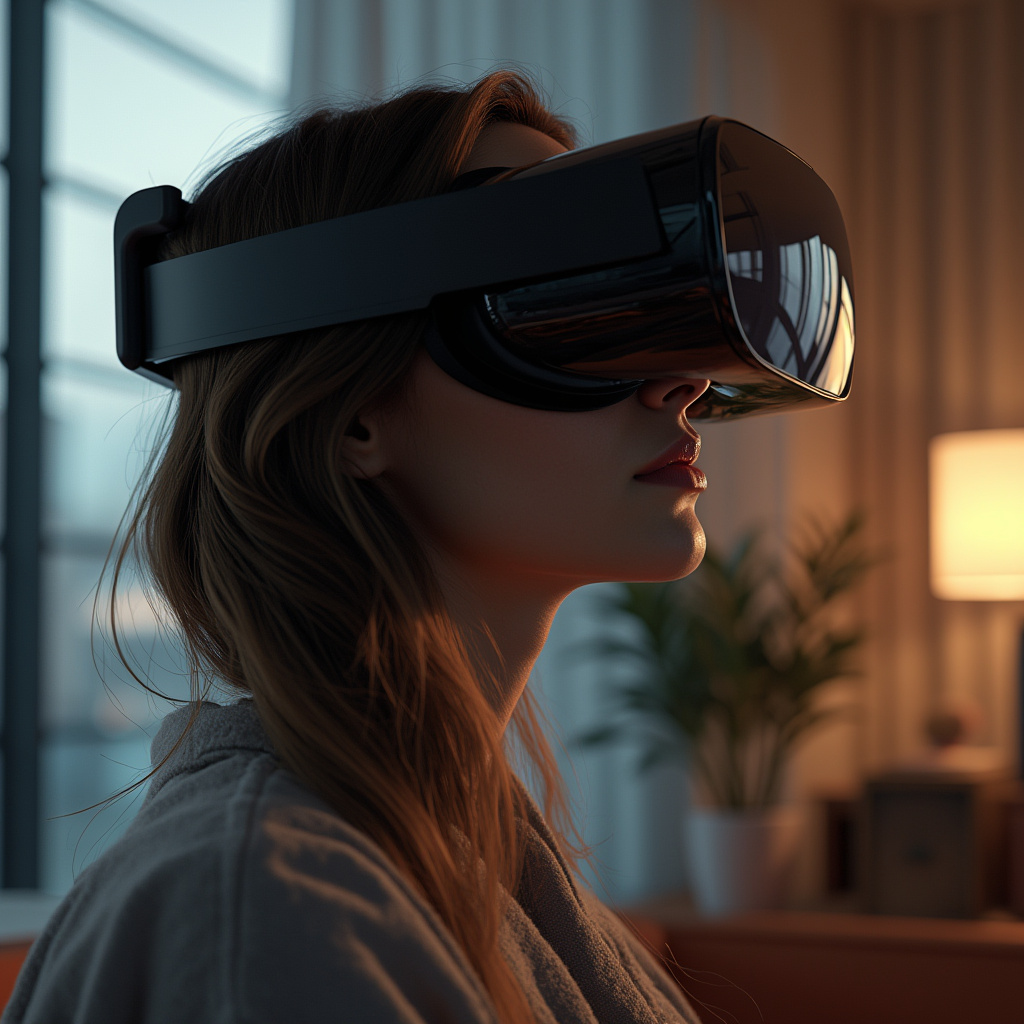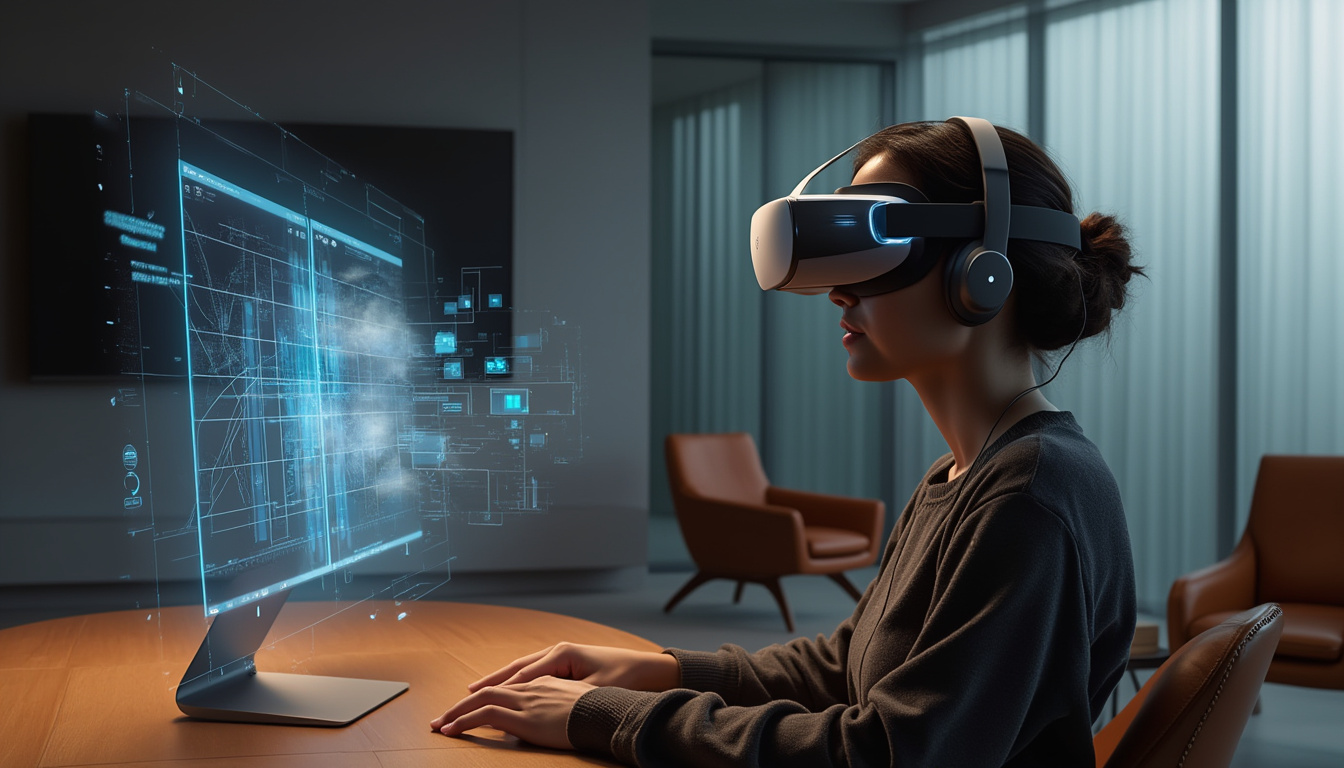
Apple’s Vision Pro headset is set to make a splash in the tech world, but its success may hinge on the quality of its app ecosystem. The device will launch with a mix of native visionOS apps and existing iPad apps, a strategy that offers both benefits and drawbacks. Native visionOS apps are designed specifically for the Vision Pro, leveraging its unique features like eye tracking, hand gestures, and spatial awareness. These apps promise a more immersive and intuitive experience. Highlights include Apple’s own optimized apps such as Safari, FaceTime, and Photos, along with third-party services like Disney+ and Discovery+ offering immersive viewing experiences. Productivity tools like Fantastical and JigSpace are also being developed to utilize spatial computing. However, the number of native visionOS apps is limited at launch, with only about 150 available. To compensate for the limited native apps, Apple is allowing iPad apps to run on the Vision Pro. This provides immediate access to a vast library of existing applications, including popular services and tools. Despite the benefits, there are drawbacks. iPad apps may not be optimized for the Vision Pro’s interface, leading to awkward layouts or controls. This could result in a less-than-seamless user experience. The blend of native and iPad apps creates a potentially inconsistent user experience. Native apps are expected to feel natural and intuitive, while iPad apps might require users to switch between different interaction models, possibly leading to compatibility issues or limited functionality. Developers face several challenges when creating apps for the Vision Pro. Limited access to development kits and uncertainty about the platform’s future and user base are significant hurdles. Additionally, the need to redesign interfaces for spatial computing adds complexity. Several apps are generating excitement for their potential on the Vision Pro. Immersive video experiences from Disney+ and other streaming services, productivity tools like Fantastical that integrate with the spatial interface, and educational apps like JigSpace that can create 3D models in the user’s space are just a few examples. As the Vision Pro ecosystem matures, we can expect more developers to create native visionOS apps, improvements in the compatibility and usability of iPad apps, and innovative new applications that fully utilize the headset’s capabilities. The success of the Vision Pro will largely depend on the quality and variety of apps available, as well as how well they integrate with the device’s unique features. While the initial app lineup shows promise, the true potential of the platform may take time to realize as developers become more familiar with visionOS and its capabilities. The Apple Vision Pro headset represents a significant step forward in mixed reality technology, with its app ecosystem playing a crucial role in shaping its success. While the device launches with a modest number of native visionOS apps, the inclusion of iPad apps helps broaden its utility. However, the user experience may vary due to the mix of optimized and non-optimized applications. The Vision Pro’s potential largely depends on the growth of its app ecosystem. As developers become more accustomed to visionOS, we can anticipate more innovative and tailored applications. While the initial lineup is promising, the true impact of the Vision Pro will become clearer as its ecosystem matures and expands. At launch, the Vision Pro will have approximately 150 native visionOS apps, including optimized versions of Apple’s own apps like Safari, FaceTime, and Photos, as well as third-party apps like Disney+ and Discovery+. Native visionOS apps are specifically designed for the Vision Pro, taking full advantage of its features such as eye tracking, hand gestures, and spatial awareness. iPad apps, while functional, may not be optimized for the Vision Pro’s interface, potentially leading to a less seamless experience. The user experience may vary. Native visionOS apps are expected to feel intuitive and immersive, while iPad apps might require switching between different interaction models, which could lead to compatibility issues or inconsistent functionality. Notable apps include immersive streaming services like Disney+ and Discovery+, productivity tools like Fantastical, and educational apps like JigSpace, which utilize the Vision Pro’s spatial computing capabilities. As the Vision Pro matures, we can expect more native visionOS apps, improvements in iPad app compatibility, and innovative applications that fully leverage the device’s unique features. The ecosystem’s growth will depend on developer adoption and user feedback.Apple Vision Pro Apps: A Mixed Bag of Promise and Challenges
Native visionOS Apps: Tailored for Immersion
iPad Apps on Vision Pro: Expanding the Ecosystem
User Experience: A Mixed Reality
Developer Challenges: Building for the Future
Notable Apps and Experiences: A Glimpse of Potential
Looking Ahead: The Evolution of visionOS

Conclusion
Frequently Asked Questions
How many native visionOS apps are available at launch?
What is the difference between native visionOS apps and iPad apps on the Vision Pro?
What kind of user experience can I expect from the Vision Pro?
Which apps should I look out for on the Vision Pro?
What does the future hold for the Vision Pro ecosystem?

 Top Vision Pro Apps: The Best, The Worst, and The Most Bizarre
Top Vision Pro Apps: The Best, The Worst, and The Most Bizarre
0 Comment